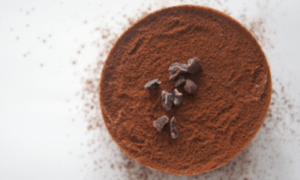Finally hot chocolate worthy of your mug.

We came to the specialty coffee industry early — back when it was, (as it happily remains in many respects today), a market populated by artisan roasters deeply involved in the daily operations of their companies. Some of these entrepreneurs have grown their companies into substantial commercial concerns with multi-state footprints in both the retail and wholesale worlds, often employing hundreds of people!
These pioneering roaster-retailers were passionate about coffee and scoured the world to find coffee beans with premier attributes, with compelling stories to tell about the places the beans were grown and the people who grew and harvested them.
This new generation of coffee connoisseurs cares about the coffee bean just as vintners care about their grapes — not as a mere commodity ingredient — but as the essence of a cup of coffee. And they concerned themselves with every facet of the coffee bean’s journey from origin: storage, shipping, shelf-life, and all the other issues that affect the flavor of their finished product. Only then, could they focus on roasting the beans just so, finally brewing them with particularity in order to extract the perfect cup of coffee.
 These roasters quickly incorporated specialty drinks among their offerings, beverages such as mochas and frappuccinos. At the time, these artisans would use ordinary, workaday chocolate syrups, often laden with high fructose corn syrup in the crafting of their beverages, thereby masking the extraordinary subtleties in coffee flavor they had worked so diligently to highlight.
These roasters quickly incorporated specialty drinks among their offerings, beverages such as mochas and frappuccinos. At the time, these artisans would use ordinary, workaday chocolate syrups, often laden with high fructose corn syrup in the crafting of their beverages, thereby masking the extraordinary subtleties in coffee flavor they had worked so diligently to highlight.
 Enter Omanhene, pioneering the first, single-bean, processed-at-origin, all-natural (non-alkalized) cocoa powder featured in a powdered hot cocoa drink mix. Our recipe was tailored specifically to the demanding palates of the specialty coffee world. It was crafted to dance in harmony with the flavors and aromas of artisan-brewed coffee. Our cocoa mix stands up to the intense flavor profile of premium coffee beans. Omanhene products help baristas make better specialty beverages.
Enter Omanhene, pioneering the first, single-bean, processed-at-origin, all-natural (non-alkalized) cocoa powder featured in a powdered hot cocoa drink mix. Our recipe was tailored specifically to the demanding palates of the specialty coffee world. It was crafted to dance in harmony with the flavors and aromas of artisan-brewed coffee. Our cocoa mix stands up to the intense flavor profile of premium coffee beans. Omanhene products help baristas make better specialty beverages.
We offer a freshness advantage over domestic cocoa processors who have to ship raw cocoa to the US, packing the delicate beans in the hold of massive cargo ships and subjecting them to a 4-6 week ocean voyage before processing — a journey that deprives cocoa beans of much of their magic. Because we go from “bean-to-bar” or “bean-to-cocoa powder” entirely in Ghana, close to the farms where these magical beans are grown, Omanhene products have a freshness advantage you can taste.

